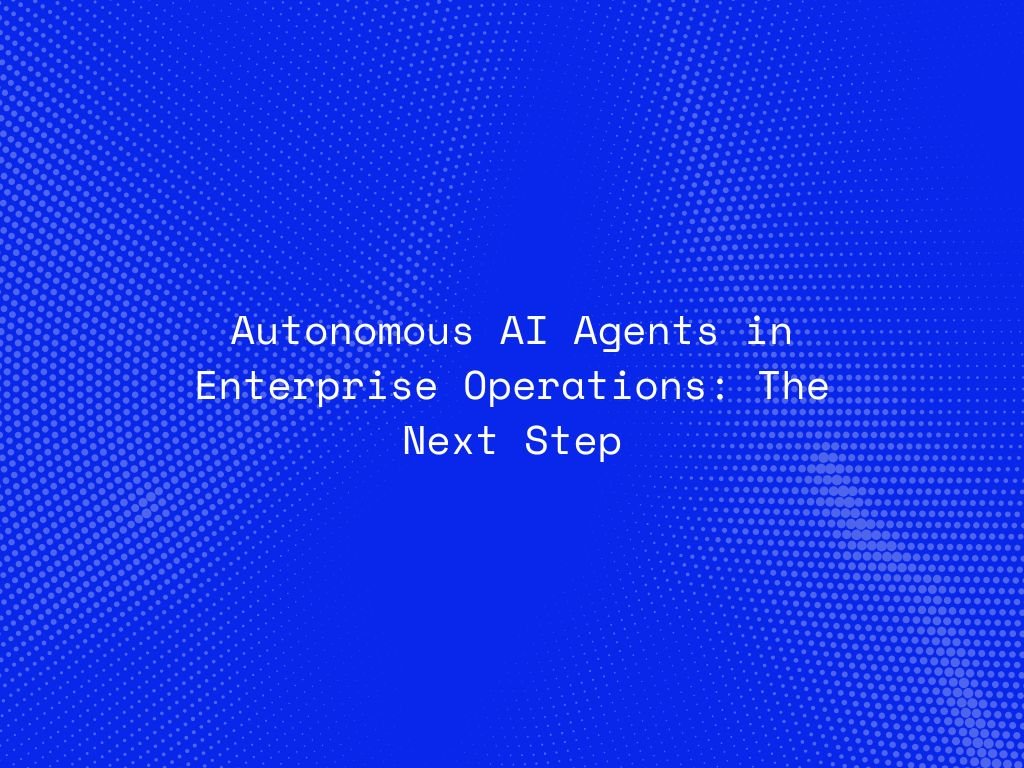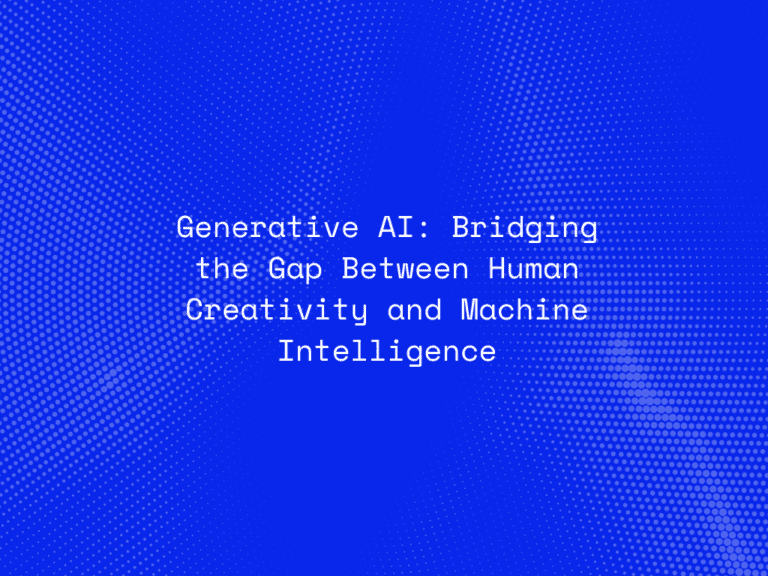The enterprise landscape is undergoing a profound transformation — one led not just by automation, but by autonomy. As Artificial Intelligence continues to evolve, a new class of intelligent systems is emerging: Autonomous AI Agents. Unlike traditional automation tools that follow predefined rules, these agents can reason, plan, and act independently, transforming how businesses operate and make decisions.
From managing workflows to optimizing logistics and handling customer queries, autonomous AI agents are rapidly becoming the next leap in enterprise intelligence. They represent a shift from machines that execute tasks to systems that collaborate, adapt, and innovate within organizational ecosystems.
What Are Autonomous AI Agents?
Autonomous AI agents are software entities capable of making decisions and performing tasks without direct human input. They combine multiple facets of AI — including machine learning, natural language processing (NLP), and reinforcement learning — to understand context, set goals, and take actions aligned with business objectives.
Unlike rule-based bots, which rely on static instructions, autonomous agents can learn from feedback, communicate with other systems, and continuously optimize performance. This enables them to handle complex, dynamic environments — such as supply chains, operations, or enterprise IT — with greater efficiency and flexibility.
In essence, autonomous AI agents act as digital collaborators, working alongside humans to enhance productivity, accuracy, and decision-making.
How Autonomous AI Agents Transform Enterprise Operations
1. Streamlining Workflow Management
Autonomous agents can manage multi-step business processes end-to-end — scheduling tasks, assigning resources, and ensuring timely execution. For instance, in enterprise project management, these agents can monitor progress, detect bottlenecks, and automatically adjust timelines or reallocate resources.
2. Intelligent Supply Chain Coordination
In logistics and manufacturing, AI agents can track inventory, coordinate shipments, and predict supply disruptions in real time. By analyzing live data from sensors, ERP systems, and external sources, they dynamically optimize supply chain performance while minimizing delays and costs.
3. Customer Support and Experience
Unlike traditional chatbots that depend on scripted responses, autonomous agents powered by large language models (LLMs) can understand intent, context, and tone — delivering personalized, human-like customer interactions. They can handle routine queries, escalate complex issues, and even predict customer needs, improving satisfaction and retention.
4. Financial Operations and Risk Management
In finance and accounting, autonomous agents are revolutionizing operations by automating reconciliation, fraud detection, and forecasting. They can simulate different financial scenarios, analyze transaction anomalies, and propose strategic decisions to improve profitability and compliance.
5. IT and Infrastructure Management
Autonomous agents in IT can proactively monitor systems, identify anomalies, deploy patches, and recover from failures — all without human intervention. These self-healing systems ensure operational continuity and reduce downtime in mission-critical environments.
Why Enterprises Are Moving Toward Autonomy
The push toward autonomy is driven by three fundamental needs: speed, scalability, and resilience.
-
Speed: Autonomous agents can process and act on data instantly, enabling real-time decision-making across business functions.
-
Scalability: They operate continuously without fatigue, allowing enterprises to scale operations globally without proportional increases in workforce.
-
Resilience: By adapting to new data and unexpected conditions, AI agents help organizations maintain performance even during disruption — whether it’s a supply chain crisis, cyberattack, or market volatility.
This evolution marks a transition from process automation to cognitive autonomy, where systems no longer wait for human instruction but act on behalf of organizational goals.
The Technology Behind Autonomous Agents
The rise of autonomous AI agents is made possible by several converging technologies:
-
Large Language Models (LLMs): Provide contextual understanding, enabling agents to comprehend complex business instructions and unstructured data.
-
Reinforcement Learning (RL): Empowers agents to learn optimal strategies through trial and error, refining their performance over time.
-
Multi-Agent Systems (MAS): Allow different AI agents to collaborate, negotiate, and achieve collective goals across departments.
-
Knowledge Graphs and Contextual Memory: Help agents retain organizational knowledge, understand relationships, and make context-aware decisions.
-
Edge and Cloud AI Integration: Combine local processing power with scalable cloud resources for efficient data handling and computation.
Together, these technologies enable agents to act intelligently, continuously improving through feedback loops and shared learning.
Benefits for Enterprises
Adopting autonomous AI agents delivers measurable advantages across strategic and operational dimensions:
-
Operational Efficiency: Reduces manual workload and accelerates business processes.
-
Cost Optimization: Minimizes errors and resource waste through data-driven precision.
-
Enhanced Decision-Making: Provides real-time insights and scenario simulations for better strategic choices.
-
24/7 Availability: Ensures uninterrupted support and monitoring across global operations.
-
Innovation Enablement: Frees human talent from repetitive tasks, allowing focus on creativity and problem-solving.
This blend of autonomy and intelligence positions enterprises for continuous optimization — a hallmark of digital transformation maturity.
Challenges and Ethical Considerations
Despite its promise, the adoption of autonomous AI agents also raises critical challenges:
-
Trust and Transparency: Enterprises must ensure explainability in decision-making to avoid “black box” operations.
-
Data Security: Agents with access to sensitive enterprise systems must be governed by strong cybersecurity frameworks.
-
Governance and Control: Defining clear human oversight mechanisms remains essential to prevent unintended consequences.
-
Cultural Readiness: Shifting from human-led to machine-assisted decision-making requires organizational change management.
Responsible deployment means establishing AI governance models that balance autonomy with accountability, ensuring ethical alignment and compliance.
The Next Step: Collaborative Intelligence
The future of enterprise operations will not be defined by machines replacing humans, but by machines augmenting human intelligence. Autonomous AI agents represent the foundation of collaborative intelligence — systems that partner with people, share context, and evolve together.
Soon, businesses will rely on “AI teams” that autonomously manage tasks, coordinate across departments, and make recommendations in real time. These digital colleagues will not only handle operations but also help leaders simulate outcomes, test strategies, and innovate at scale.
Enterprises that embrace this shift early will gain a decisive edge in agility, decision-making, and customer experience.
Conclusion
Autonomous AI agents mark the next major step in enterprise evolution — moving from automation to adaptive, intelligent collaboration. By empowering systems to think, decide, and act, businesses can achieve unprecedented levels of efficiency, responsiveness, and innovation.
The journey toward autonomous enterprises is not about eliminating human input, but about expanding human potential. As AI agents take on operational complexity, leaders can focus on creativity, ethics, and vision — guiding organizations toward a smarter, more self-sustaining future.




